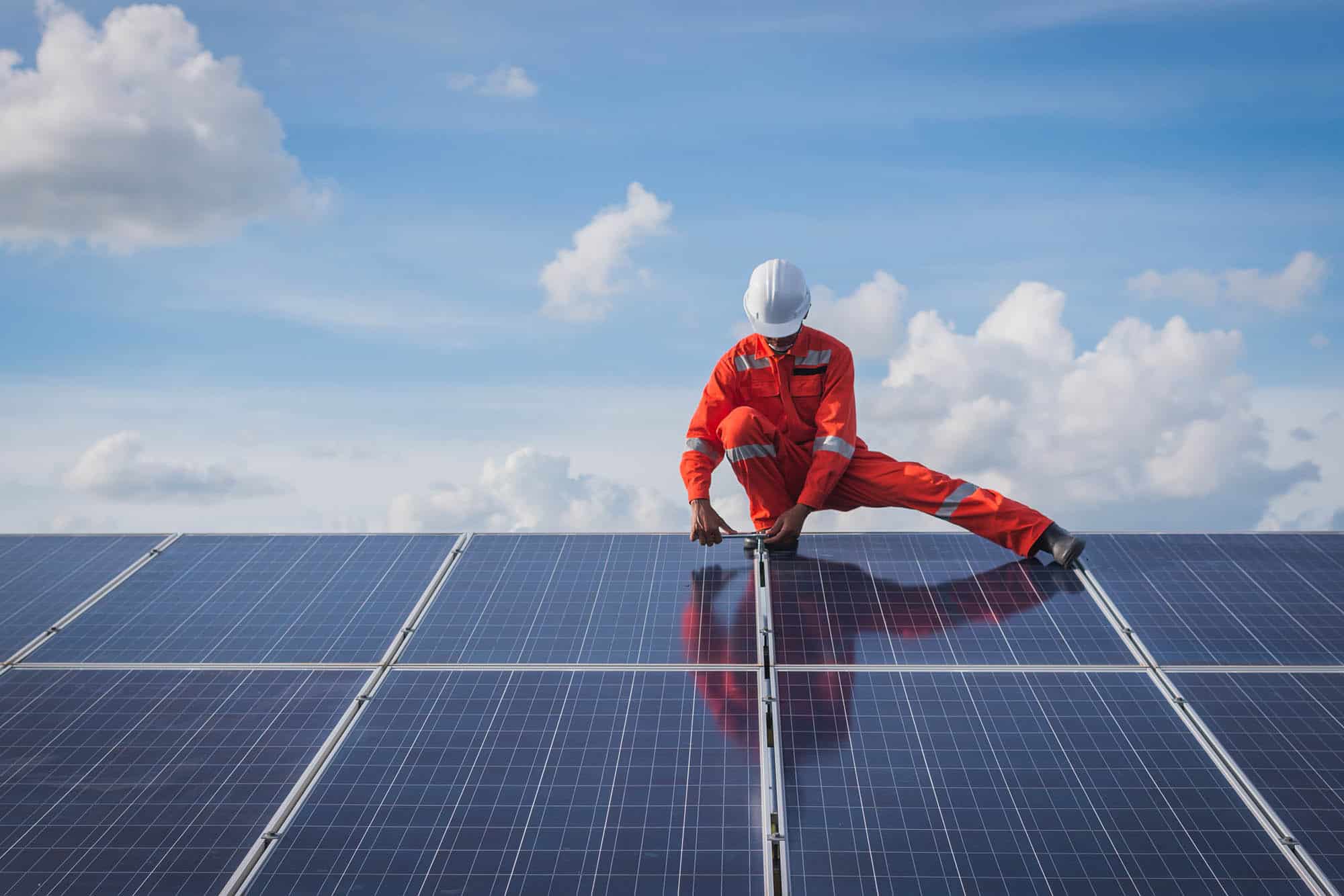Solar Panels, Components, and Installation
It can appear tough and pricey to install solar panels in your house, but neither of these factors is true. Installing solar panels is a simple task that can be done within a day or two by a skilled home handyman with the correct information and planning. Everything you want to learn about solar panels, components, and installation will be covered in this article.
What Are Solar Panels and How Much Does It Cost?
Light is converted into energy by solar panels. Solar panels can be composed of numerous materials, like silicon, aluminum, or copper, and offer a wide range of sizes, shapes, and designs. Solar panels are further wired in parallel and series circuits.
Based on the design and model, solar panels usually charge between £2895.48 and £28954.80. Although solar panels can lower your energy expenditures, it’s crucial to understand the full installation costs of solar panels to create a budget.
What Are the Types Of Solar Panels?
There are many kinds of solar panels; however, the 2 most common are photovoltaic and non-solar thermal panels. Solar panels most often used now are silicon-based photovoltaic solar panels. The most effective kind of solar panels, photovoltaic ones, can create higher energy than other kinds of solar panels. Using the sun’s light energy to produce electricity, non-solar thermal panels do that.
Yet, they can be utilized in any weather. Non-solar thermal panels have a reduced efficiency level. Size is another strategy for dividing solar panels. Large solar panels often give the energy required to run a home or commercial premises. Small solar panels are typically built into a roof or wall to supply a small location, like a kitchen or bathroom. Residential solar panels are another name for these solar panels.
5 Components of Solar Panels

- Sunlight Is Used to Create Solar Energy
The sun provides energy to solar panels. Rather than generating energy, a solar system transforms sunlight into energy that can be used in your house. A basic solar panel comprises a layer of silicon cells, a metal frame, a glass enclosure, and different wiring to let current flow from the silicon cells. Given its conductive qualities, nonmetal silicon can absorb sunlight and turn it into energy.
The contact of light with a silicon cell puts electrons in action that start an electric current. The basic operation of solar panels is outlined by what is known as the “photovoltaic effect.” Your solar panels can produce energy while the sun is out. Because the sun’s rays can penetrate the clouds in cloudy weather, your panels can make electricity. - Solar Panels Consume Sunlight
The photovoltaic silicon solar cell absorbs solar radiation to start the photovoltaic operation. The contact between silicon cells and the sun’s rays leads electrons to begin moving, which creates an electric current. When the sun hits the panels, they generate simple current (DC) electricity.
The kind of panel, where it’s put, the time of day, and the temperature all impact how much electricity a panel can create. The overall rating of a panel is the indicator of how much energy it can create. In essence, the ability to create energy increases with an efficiency rating. - The Inverter Transforms the Electricity
A solar inverter can take the DC electricity that solar panels have received and absorbed. Alternating current (AC) electricity runs the grid and your home’s devices. To generate electricity, an inverter can turn the DC electricity from your panels into AC electricity. Micro inverters and string inverters are the most common kinds of inverters.
Your home’s side is where the string inverter is placed, so it gathers all the power produced by your system into one area. Each solar panel has a micro inverter on its underside that enables DC to be changed to AC directly on the solar panel. - Your House Is Solar – Powered
Solar panels are linked to the electric panel of your house that can supply power as desired. Every device on your power system, including your dishwasher, air conditioner, and electric car, is connected to the panel. This lets you run your home with the energy generated by solar panels. - Grid receives power
Electricity can be sent to the grid if your solar panels create more energy than your home needs. Power will be taken from the grid if you use energy while your solar panels aren’t creating any or if you use more than they generate. The electric meter tracks the electricity flow to and from your house, enabling homeowners who use solar panels to reduce their monthly energy costs.
How To Install Solar Panels

- Install Scaffolding
To increase security when completing the installation while on the roof, you must first create scaffolding. - Setup Solar Panel Mounts
The solar panel mounting system should be tilted to optimize sunlight access. - Set Up the Solar Panels
Installing the solar panel on the mounting framework is needed after the mounts are set up. You ensure that it holds steady and helps secure all the bolts and nuts. - Solar Panels Wiring
The system’s inverters should be linked to it and maintained in a cooler area, like the garage or utility room. - Set Up a Solar Inverter
The system’s inverters should be linked to it and maintained in a cooler area, like the garage or utility room. - Bonded Solar Battery and Inverter
The solar battery must be linked to the solar inverter. Thanks to solar battery storage, you will not be concerned about running out of useful energy when it’s cloudy, which can help save installation costs for solar battery storage systems. - To The Consumer Unit, Attach the Inverter
Electricity should be created by the inverter and monitored by a generation meter linked to the consumer unit. - Start And Test the Solar Panels
The recently installed solar panel system must be tested and turned on as the final stage. The solar panels’ installation is then complete.
Conclusion
A building’s roof can be fitted with silicon solar panels that can turn sunlight into power. Solar panels are connected in parallel and series circuits designed for several electrical components. The voltage across each element is identical to the voltage across the entire circuit. Solar panels can be found in various shapes, sizes, and materials.
Solar panels are linked to an inverter that converts the energy they create into the voltage your appliances use. The majority of devices need alternating currents that solar panels can supply. According to their size, solar panels can power a full house, a business building, or just one room. This article will help you know about solar panels, components, and installation.


